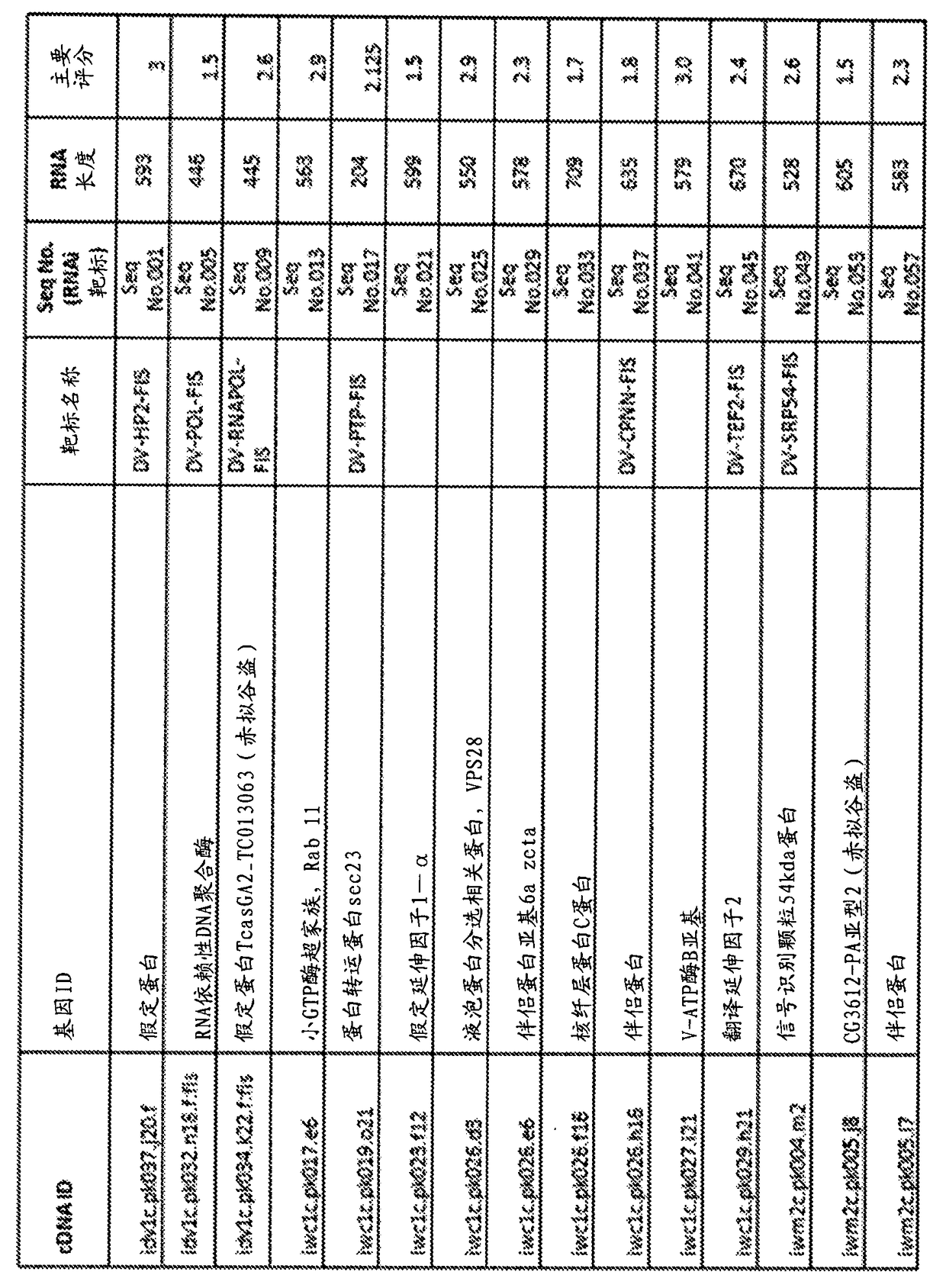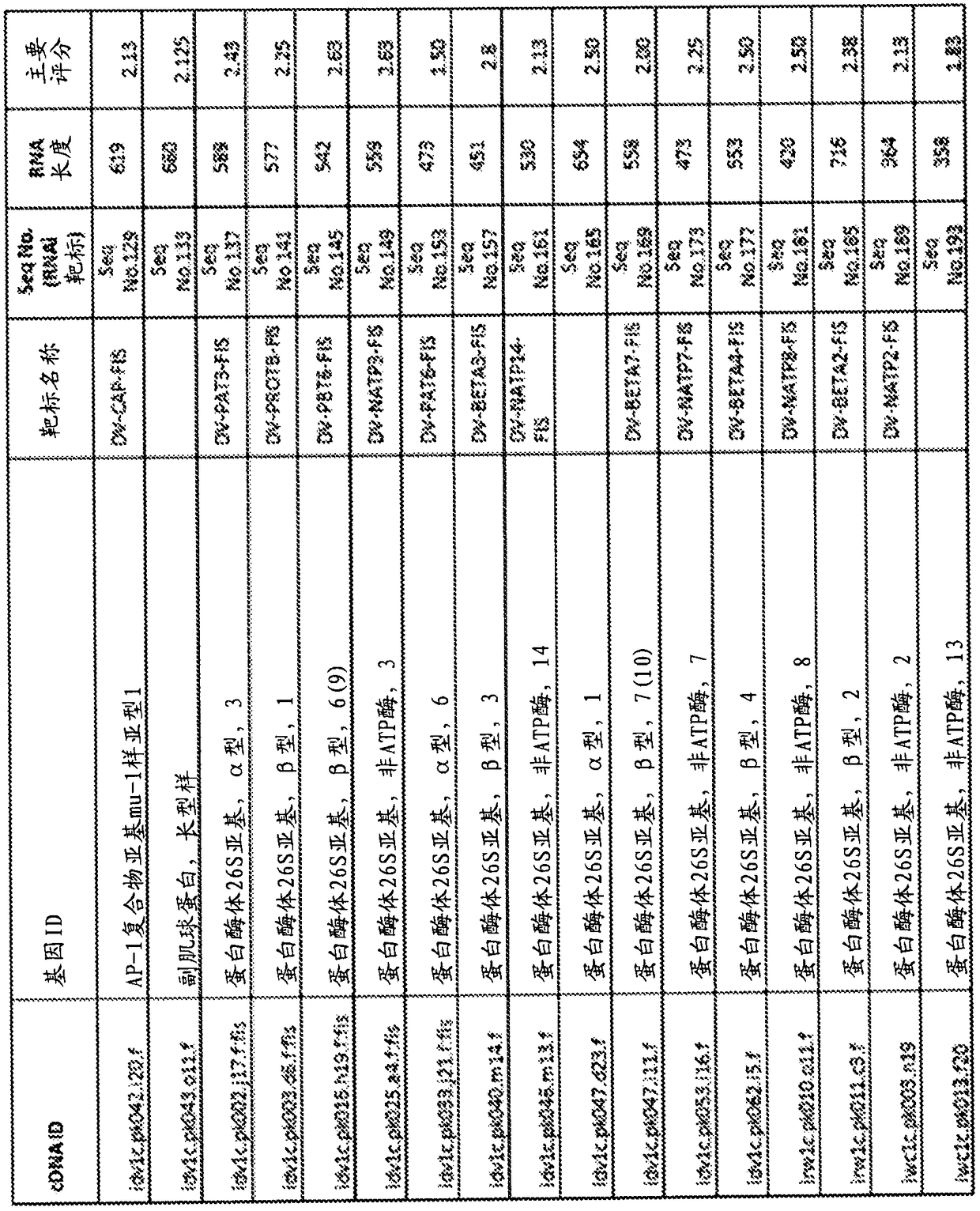Compositions and methods to control insect pests
A technology of expressing cassettes and polynucleotides, applied in the field of compositions and methods for controlling insect pests, capable of solving problems such as environmental impact
- Summary
- Abstract
- Description
- Claims
- Application Information
AI Technical Summary
Problems solved by technology
Method used
Image
Examples
example 1
[0265] Example 1: In vitro transcript dsRNA screening method
[0266] cDNA libraries were generated from newly hatched western corn rootworm larvae by standard methods. Selected cDNA clones containing expressed sequence tags were amplified in PCR using universal primers from the plasmid backbone flanking the EST insert. This universal primer also contains a T7 RNA polymerase site. The product of this PCR reaction is used as a template for an in vitro transcription (IVT) reaction that produces long double-stranded RNA. Following enzymatic digestion and removal of DNA template and single-stranded RNA, the IVT reaction products were incorporated into artificial insect baits as described below.
[0267] Different target selection strategies were used in the present invention to identify RNAi-active targets with insecticidal activity in a corn rootworm bait-based assay. cDNA libraries were generated by standard methods from the midgut of newly hatched or 3rd instar western cor...
example 2
[0272] Example 2. Sequences having insecticidal activity
[0273] The DNA sequence encoding the double-stranded RNA demonstrated to have insecticidal activity against corn rootworm using the assay described in Example 1 is shown below. Non-limiting examples of target polynucleotides are shown in Tables 1A and B below and the following sequences: SEQ ID NO: 1, 4, 5, 8, 9, 12, 13, 16, 17, 20, 21, 24, 25, 28, 29, 32, 33, 36, 37, 40, 41, 44, 45, 48, 49, 52, 53, 54, 55, 56, 57, 60, 61, 64, 65, 68, 69, 72, 73, 76, 77, 80, 81, 84, 85, 88, 89, 92, 93, 96, 97, 100, 101, 104, 105, 108, 109, 112, 113, 116, 117, 120, 121, 124, 125, 128, 129, 132, 133, 136, 137, 140, 141, 144, 145, 148, 149, 152, 153, 156, 157, 160, 161, 164, 165, 168, 169, 172, 173, 176, 177, 180, 181, 184, 185, 188, 189, 192, 193, 196, 197, 200, 201, 204, 205, 208, 209, 212, 213, 216, 217, 220, 221, 224, 225, 228, 229, 232, 233, 236, 237, 240, 241, 244, 245, 248, 249, 252, 253, 256, 257, 260, 261, 264, 265, 268, 269...
example 3
[0277] Example 3. Identification of RNAi active targets from other insects
[0278]To identify RNAi-active genes from other important corn pests or non-target insects, samples from northern corn rootworm (Diabrotica barberi), southern corn rootworm (Diabrotica undecimpunctata), Mexican bean lady beetle (Epilachna varivestis), Colorado potato beetle ( Transcriptome experiments were performed on 3rd instar larvae of Leptinotarsa decemlineata), cunning flower bug (Orius insidiosus) and brown-spotted ladybug (Coleomegilla maculata, [CMAC]). Homologous transcripts of RNAi active leaders are listed in Table 3 (Seq No. 693 to 723). This sequence data is important for designing fragments that suppress target pest genes and avoid down-regulation of the same genes in non-target insects.
PUM
 Login to View More
Login to View More Abstract
Description
Claims
Application Information
 Login to View More
Login to View More - R&D
- Intellectual Property
- Life Sciences
- Materials
- Tech Scout
- Unparalleled Data Quality
- Higher Quality Content
- 60% Fewer Hallucinations
Browse by: Latest US Patents, China's latest patents, Technical Efficacy Thesaurus, Application Domain, Technology Topic, Popular Technical Reports.
© 2025 PatSnap. All rights reserved.Legal|Privacy policy|Modern Slavery Act Transparency Statement|Sitemap|About US| Contact US: help@patsnap.com



